第7次实践作业
第19小组 rm-f队
一、在树莓派中安装opencv库
opencv我在第6次实验中安装过了,编译源码的方式太慢了,这边用pip安装
同时纠正下我的第6次实验博客“遇到的问题”中对安装版本的认识,4B可以安装opencv4,在这一次实验遇到的问题中具体讲。
首先安装依赖
pip3 install --upgrade setuptools
pip3 install numpy Matplotlib
sudo apt-get install libjpeg-dev libtiff5-dev libjasper-dev libpng12-dev
sudo apt-get install libavcodec-dev libavformat-dev libswscale-dev libv4l-dev
sudo apt-get install libxvidcore-dev libx264-dev
sudo apt-get install libgtk2.0-dev libgtk-3-dev
sudo apt-get install libatlas-base-dev
sudo apt install libqt4-test
然后安装opencv
这样默认安装最新版
pip3 install opencv-python
安装成功

二、使用opencv和python控制树莓派的摄像头
示例代码
# import the necessary packages
from picamera.array import PiRGBArray
from picamera import PiCamera
import time
import cv2
# initialize the camera and grab a reference to the raw camera capture
camera = PiCamera()
rawCapture = PiRGBArray(camera)
# allow the camera to warmup
time.sleep(0.1)
# grab an image from the camera
camera.capture(rawCapture, format="bgr")
image = rawCapture.array
# display the image on screen and wait for a keypress
cv2.imshow("Image", image)
cv2.waitKey(0)
代码中感光时间不够长
即time.sleep(0.1) 处仅为0.1秒,如果拍照环境比较暗,例如下图1,效果就不太好,建议将感光时间稍微改长一点,例如图2,同样环境,感光时间是2s
图1

图2
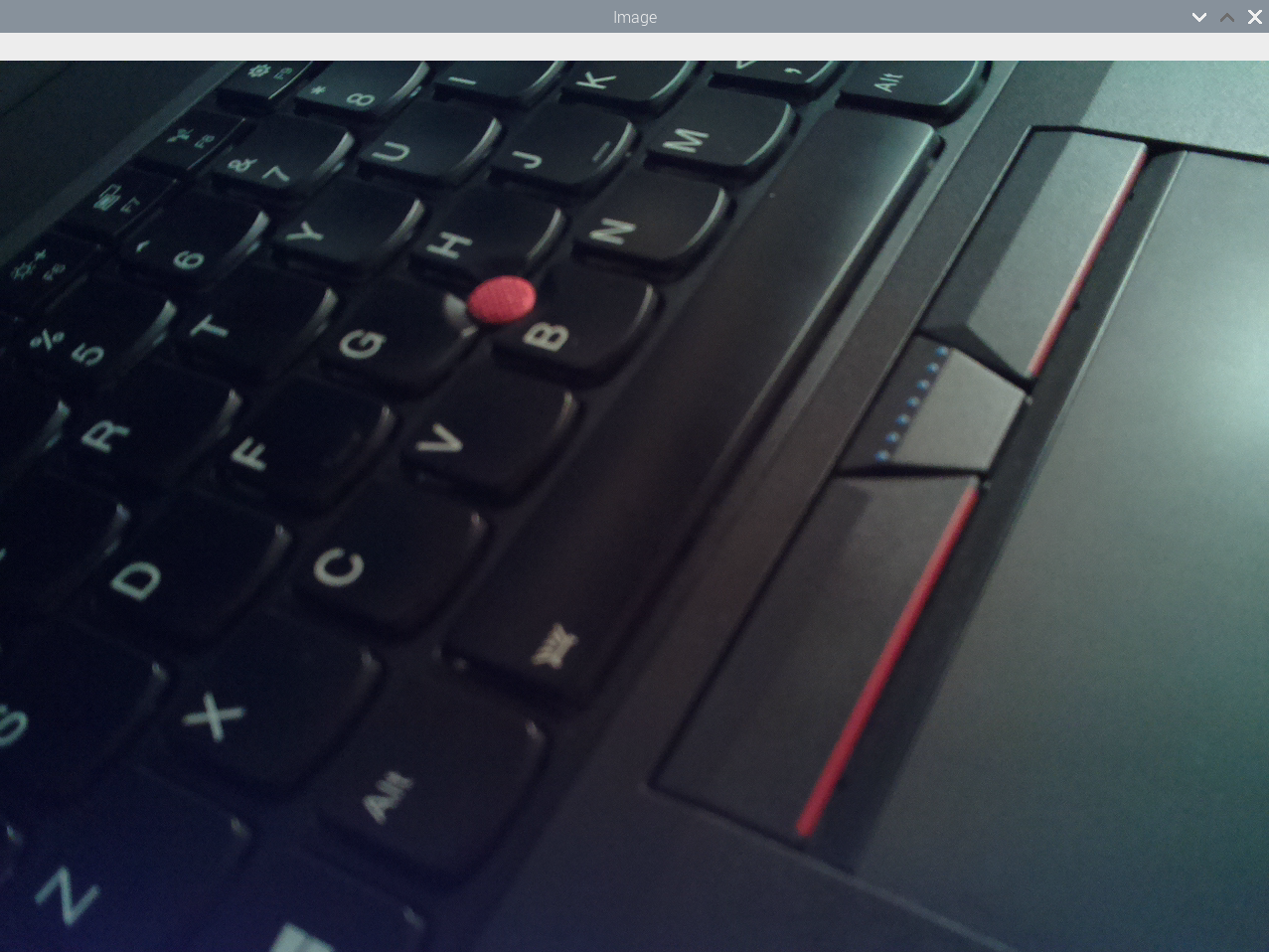
下面这个是第6次实验中我已经完成过了的
通过摄像头实时拍摄查看视频
import cv2
cap = cv2.VideoCapture(0)
while(1):
ret, frame = cap.read()
cv2.imshow("capture", frame)
if cv2.waitKey(1) & 0xFF == ord('q'):
break
cap.release()
cv2.destroyAllWindows()
三、利用树莓派的摄像头实现人脸识别
1.facerec_on_raspberry_pi.py
facerec_on_raspberry_pi.py
# This is a demo of running face recognition on a Raspberry Pi.
# This program will print out the names of anyone it recognizes to the console.
# To run this, you need a Raspberry Pi 2 (or greater) with face_recognition and
# the picamera[array] module installed.
# You can follow this installation instructions to get your RPi set up:
# https://gist.github.com/ageitgey/1ac8dbe8572f3f533df6269dab35df65
import face_recognition
import picamera
import numpy as np
# Get a reference to the Raspberry Pi camera.
# If this fails, make sure you have a camera connected to the RPi and that you
# enabled your camera in raspi-config and rebooted first.
camera = picamera.PiCamera()
camera.resolution = (320, 240)
output = np.empty((240, 320, 3), dtype=np.uint8)
# Load a sample picture and learn how to recognize it.
print("Loading known face image(s)")
obama_image = face_recognition.load_image_file("obama_small.jpg")
obama_face_encoding = face_recognition.face_encodings(obama_image)[0]
# Initialize some variables
face_locations = []
face_encodings = []
while True:
print("Capturing image.")
# Grab a single frame of video from the RPi camera as a numpy array
camera.capture(output, format="rgb")
# Find all the faces and face encodings in the current frame of video
face_locations = face_recognition.face_locations(output)
print("Found {} faces in image.".format(len(face_locations)))
face_encodings = face_recognition.face_encodings(output, face_locations)
# Loop over each face found in the frame to see if it's someone we know.
for face_encoding in face_encodings:
# See if the face is a match for the known face(s)
match = face_recognition.compare_faces([obama_face_encoding], face_encoding)
name = "<Unknown Person>"
if match[0]:
name = "Barack Obama"
print("I see someone named {}!".format(name))
代码所在目录下应放一张用于比对的照片,文件名obama_small.jpg
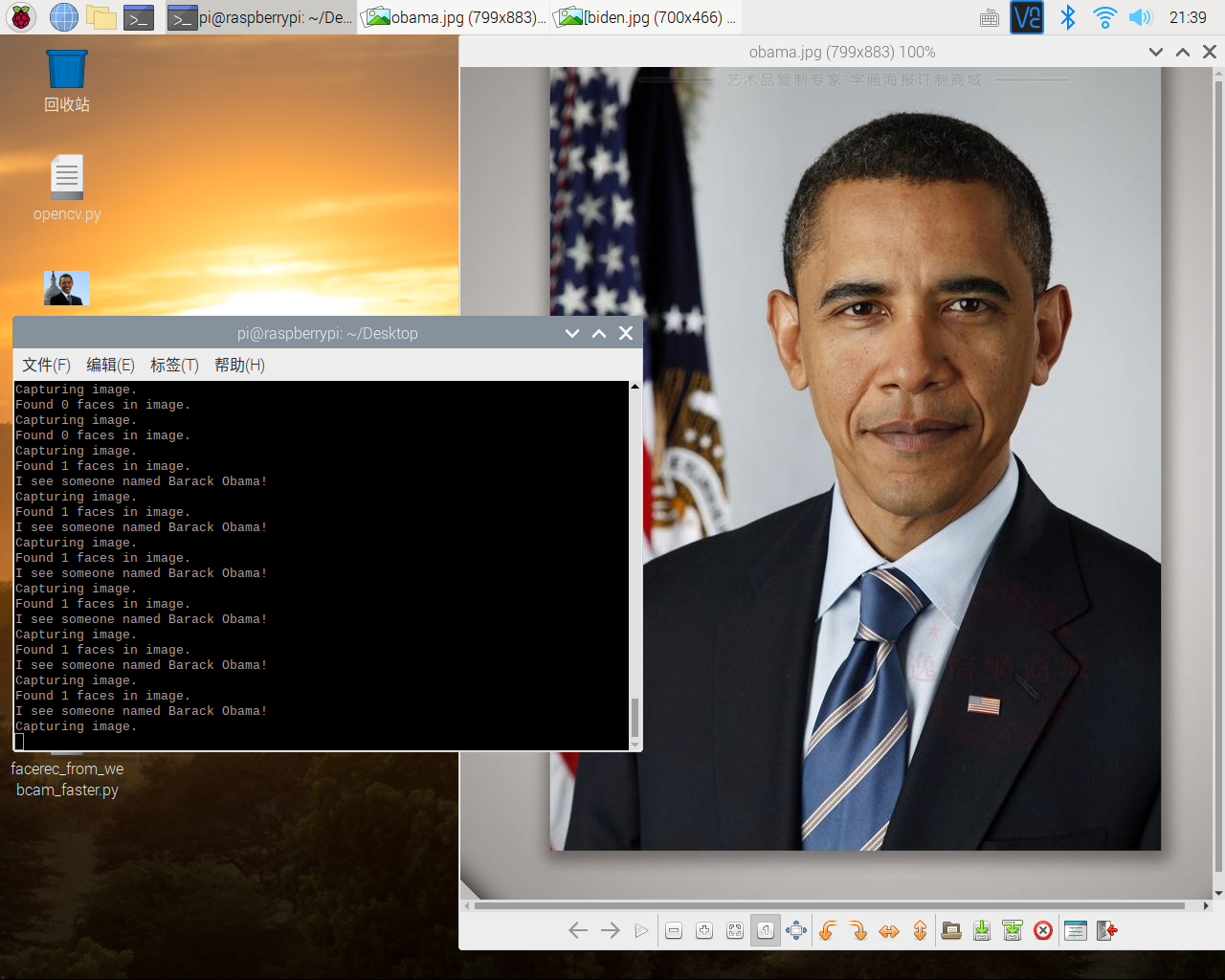
2.facerec_from_webcam_faster.py
facerec_from_webcam_faster.py
import face_recognition
import cv2
import numpy as np
# This is a demo of running face recognition on live video from your webcam. It's a little more complicated than the
# other example, but it includes some basic performance tweaks to make things run a lot faster:
# 1. Process each video frame at 1/4 resolution (though still display it at full resolution)
# 2. Only detect faces in every other frame of video.
# PLEASE NOTE: This example requires OpenCV (the `cv2` library) to be installed only to read from your webcam.
# OpenCV is *not* required to use the face_recognition library. It's only required if you want to run this
# specific demo. If you have trouble installing it, try any of the other demos that don't require it instead.
# Get a reference to webcam #0 (the default one)
video_capture = cv2.VideoCapture(0)
# Load a sample picture and learn how to recognize it.
obama_image = face_recognition.load_image_file("obama.jpg")
obama_face_encoding = face_recognition.face_encodings(obama_image)[0]
# Load a second sample picture and learn how to recognize it.
biden_image = face_recognition.load_image_file("biden.jpg")
biden_face_encoding = face_recognition.face_encodings(biden_image)[0]
# Create arrays of known face encodings and their names
known_face_encodings = [
obama_face_encoding,
biden_face_encoding
]
known_face_names = [
"Barack Obama",
"Joe Biden"
]
# Initialize some variables
face_locations = []
face_encodings = []
face_names = []
process_this_frame = True
while True:
# Grab a single frame of video
ret, frame = video_capture.read()
# Resize frame of video to 1/4 size for faster face recognition processing
small_frame = cv2.resize(frame, (0, 0), fx=0.25, fy=0.25)
# Convert the image from BGR color (which OpenCV uses) to RGB color (which face_recognition uses)
rgb_small_frame = small_frame[:, :, ::-1]
# Only process every other frame of video to save time
if process_this_frame:
# Find all the faces and face encodings in the current frame of video
face_locations = face_recognition.face_locations(rgb_small_frame)
face_encodings = face_recognition.face_encodings(rgb_small_frame, face_locations)
face_names = []
for face_encoding in face_encodings:
# See if the face is a match for the known face(s)
matches = face_recognition.compare_faces(known_face_encodings, face_encoding)
name = "Unknown"
# # If a match was found in known_face_encodings, just use the first one.
# if True in matches:
# first_match_index = matches.index(True)
# name = known_face_names[first_match_index]
# Or instead, use the known face with the smallest distance to the new face
face_distances = face_recognition.face_distance(known_face_encodings, face_encoding)
best_match_index = np.argmin(face_distances)
if matches[best_match_index]:
name = known_face_names[best_match_index]
face_names.append(name)
process_this_frame = not process_this_frame
# Display the results
for (top, right, bottom, left), name in zip(face_locations, face_names):
# Scale back up face locations since the frame we detected in was scaled to 1/4 size
top *= 4
right *= 4
bottom *= 4
left *= 4
# Draw a box around the face
cv2.rectangle(frame, (left, top), (right, bottom), (0, 0, 255), 2)
# Draw a label with a name below the face
cv2.rectangle(frame, (left, bottom - 35), (right, bottom), (0, 0, 255), cv2.FILLED)
font = cv2.FONT_HERSHEY_DUPLEX
cv2.putText(frame, name, (left + 6, bottom - 6), font, 1.0, (255, 255, 255), 1)
# Display the resulting image
cv2.imshow('Video', frame)
# Hit 'q' on the keyboard to quit!
if cv2.waitKey(1) & 0xFF == ord('q'):
break
# Release handle to the webcam
video_capture.release()
cv2.destroyAllWindows()
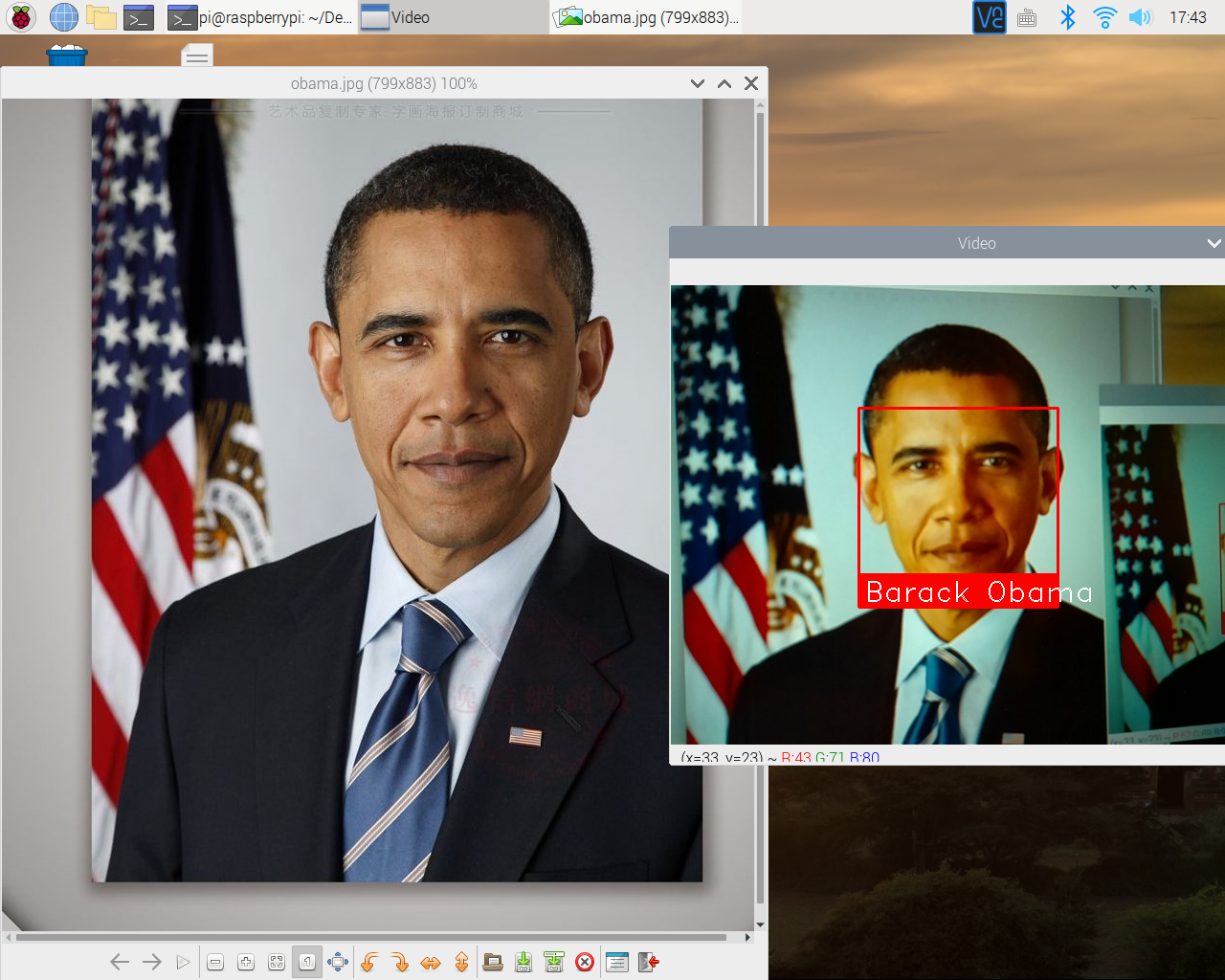
四、结合微服务的进阶任务
1.安装Docker
下载安装脚本
curl -fsSL https://get.docker.com -o get-docker.sh

执行安装脚本(使用阿里云镜像)
sh get-docker.sh --mirror Aliyun
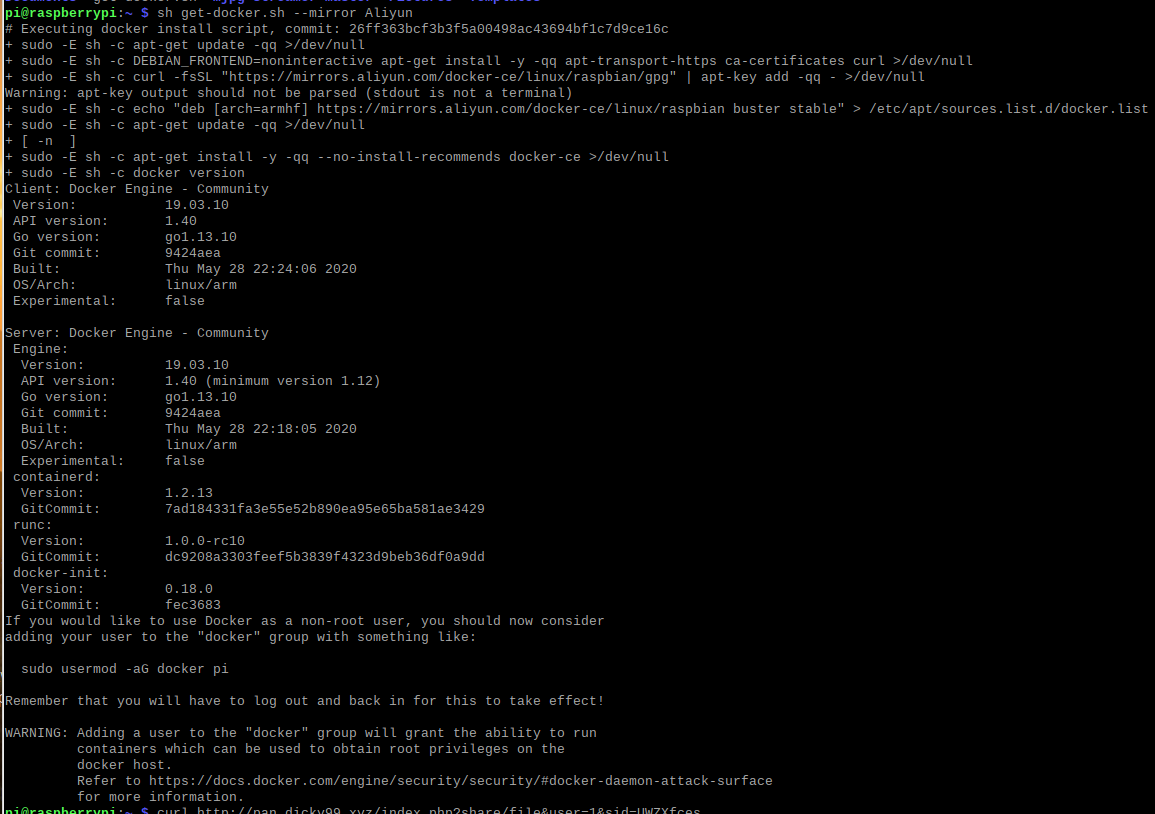
将当前用户加入docker用户组
sudo usermod -aG docker $USER
尝试下查看docker版本

重启过后,docker指令之前就不需要加sudo了
(2).配置docker的镜像加速
具体请参考我的第1次作业博客
sudo nano /etc/docker/daemon.json
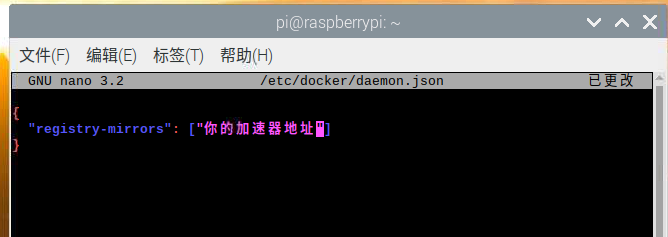
编辑完成后,restart一下docker
service docker restart
(3).定制自己的opencv镜像
首先拉取镜像
docker pull sixsq/opencv-python

运行这个镜像
docker run -it sixsq/opencv-python /bin/bash
在容器中,pip安装 "picamera[array]" dlib face_recognition
pip install "picamera[array]" dlib face_recognition

安装成功,退出容器
然后commit

编写Dockerfile
FROM zqzopencv
MAINTAINER ZhuQingzhang031702426
RUN mkdir /myapp
WORKDIR /myapp
COPY myapp .
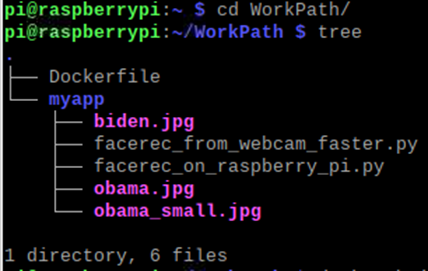
build
docker build -t myopencv .


(4).运行容器执行facerec_on_raspberry_pi.py
docker run -it --device=/dev/vchiq --device=/dev/video0 --name facerec myopencv
root@38afdcc52062:/myapp# ls
biden.jpg facerec_from_webcam_faster.py facerec_on_raspberry_pi.py obama.jpg obama_small.jpg
root@38afdcc52062:/myapp# python3 facerec_on_raspberry_pi.py

如果不加--device=/dev/vchiq参数
则会出现以下报错
* failed to open vchiq instance

(5).附加选做:opencv的docker容器中运行facerec_from_webcam_faster.py
在Windows系统中安装Xming
安装过程一路默认即可
(https://sourceforge.net/projects/xming/)
检查树莓派的ssh配置中的X11是否开启
cat /etc/ssh/sshd_config
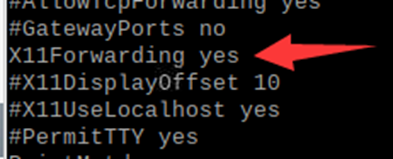
putty中勾起X11选项
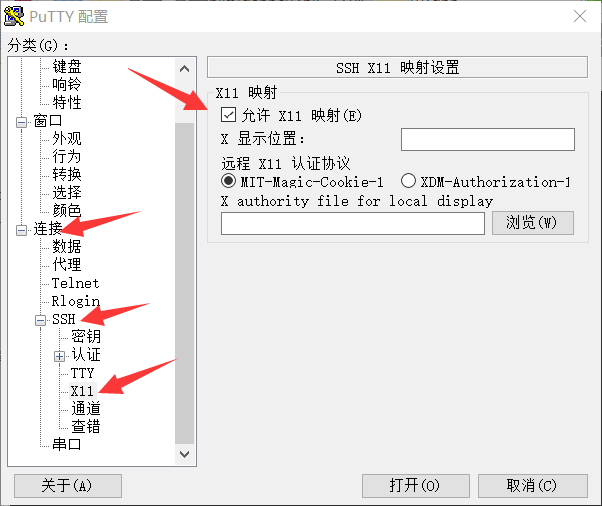
然后使用Putty的ssh登录树莓派
查看DISPLAY环境变量值
printenv
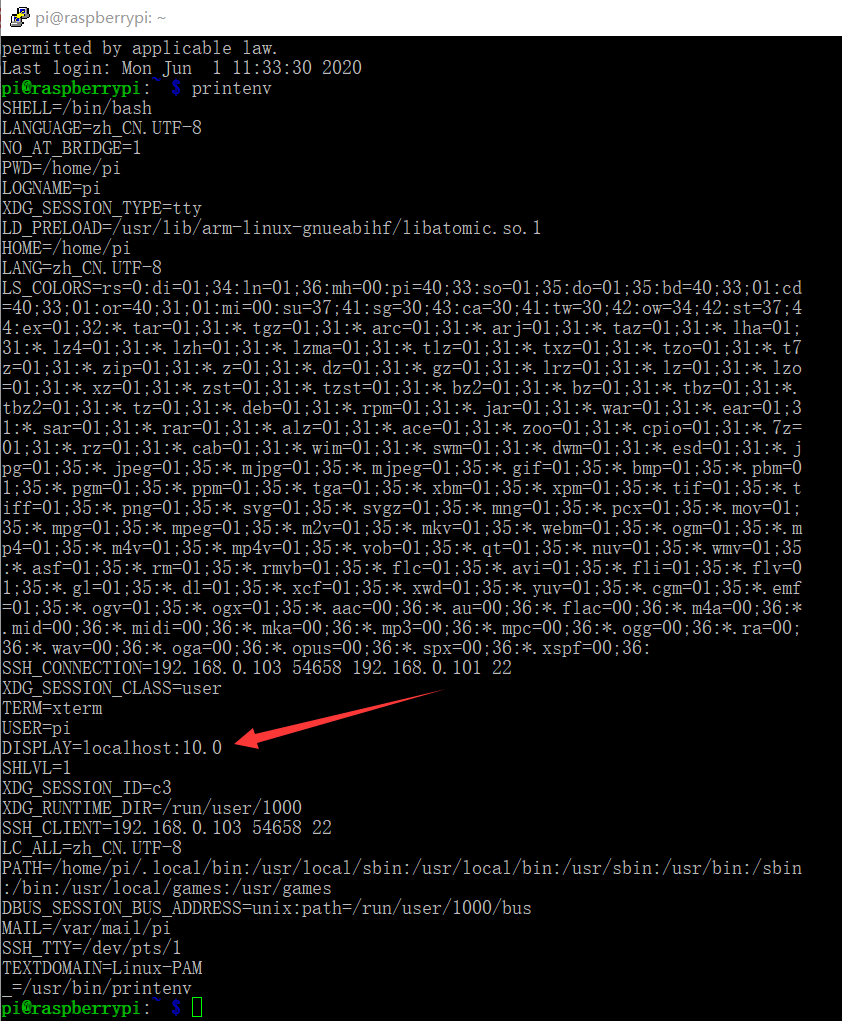
可以看到
DISPLAY=localhost:10.0
然后编写run.sh
#sudo apt-get install x11-xserver-utils
xhost +
docker run -it
--net=host
-v $HOME/.Xauthority:/root/.Xauthority
-e DISPLAY=:10.0
-e QT_X11_NO_MITSHM=1
--device=/dev/vchiq
--device=/dev/video0
--name facerecgui
myopencv
python3 facerec_from_webcam_faster.py
在putty中用ssh运行
sh run.sh

同样,也可以在vnc中运行
编写启动脚本
runvnc.sh
#sudo apt-get install x11-xserver-utils
xhost +
docker run -it
-v /tmp/.X11-unix:/tmp/.X11-unix
-e DISPLAY=$DISPLAY
-e QT_X11_NO_MITSHM=1
--device=/dev/vchiq
--device=/dev/video0
--name facerecguivnc
myopencv
python3 facerec_from_webcam_faster.py
然后运行
sh runvnc.sh
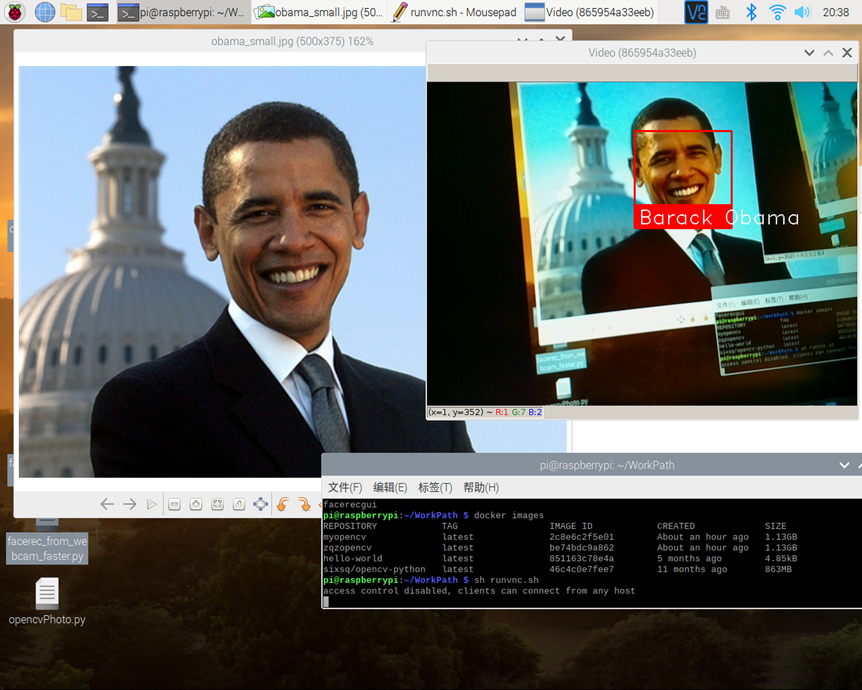
五、遇到的问题
1.关于OpenCV的版本
使用版本4的时候可能出现以下问题

Traceback (most recent call last):
File "/home/pi/Desktop/opencv.py", line 1, in <module>
import cv2
File "/home/pi/.local/lib/python3.7/site-packages/cv2/__init__.py", line 3, in <module>
from .cv2 import *
ImportError: /home/pi/.local/lib/python3.7/site-packages/cv2/cv2.cpython-37m-arm-linux-gnueabihf.so: undefined symbol: __atomic_fetch_add_8
在上一篇博客我的第6次实验博客“遇到的问题”中,我的描述是4B可能和opencv4不太兼容,所以当时我回退了版本到3,解决了。
这边更正下安装4消除这个问题的做法
遇到这个问题需要手动加载一个库文件
sudo nano .bashrc
添加:export LD_ sudo nano .bashrc PRELOAD=/usr/lib/arm-linux-gnueabihf/libatomic.so.1
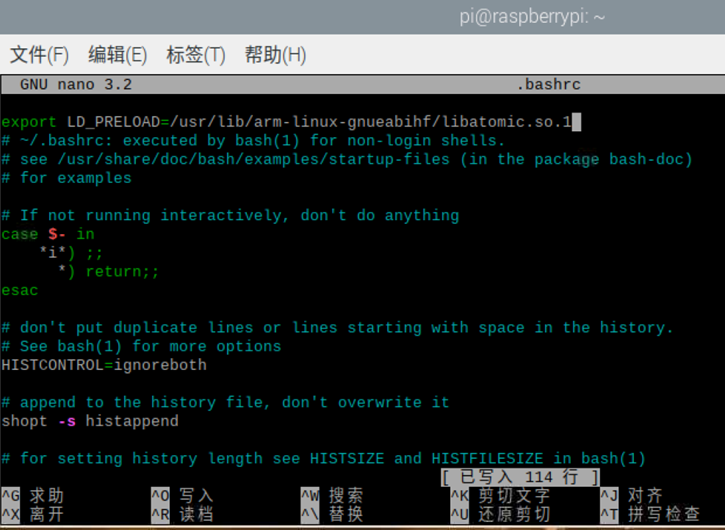
这样就不会报错了。
六、在线协作
| 031702426 | 朱庆章 | 负责实际操作 |
| 031702428 | 潘海东 | 查找资料并提供了问题1的解决方案 |
| 031702405 | 陈梦雪 | 查找资料 |
主要通过qq聊天和屏幕分享协作
屏幕分享
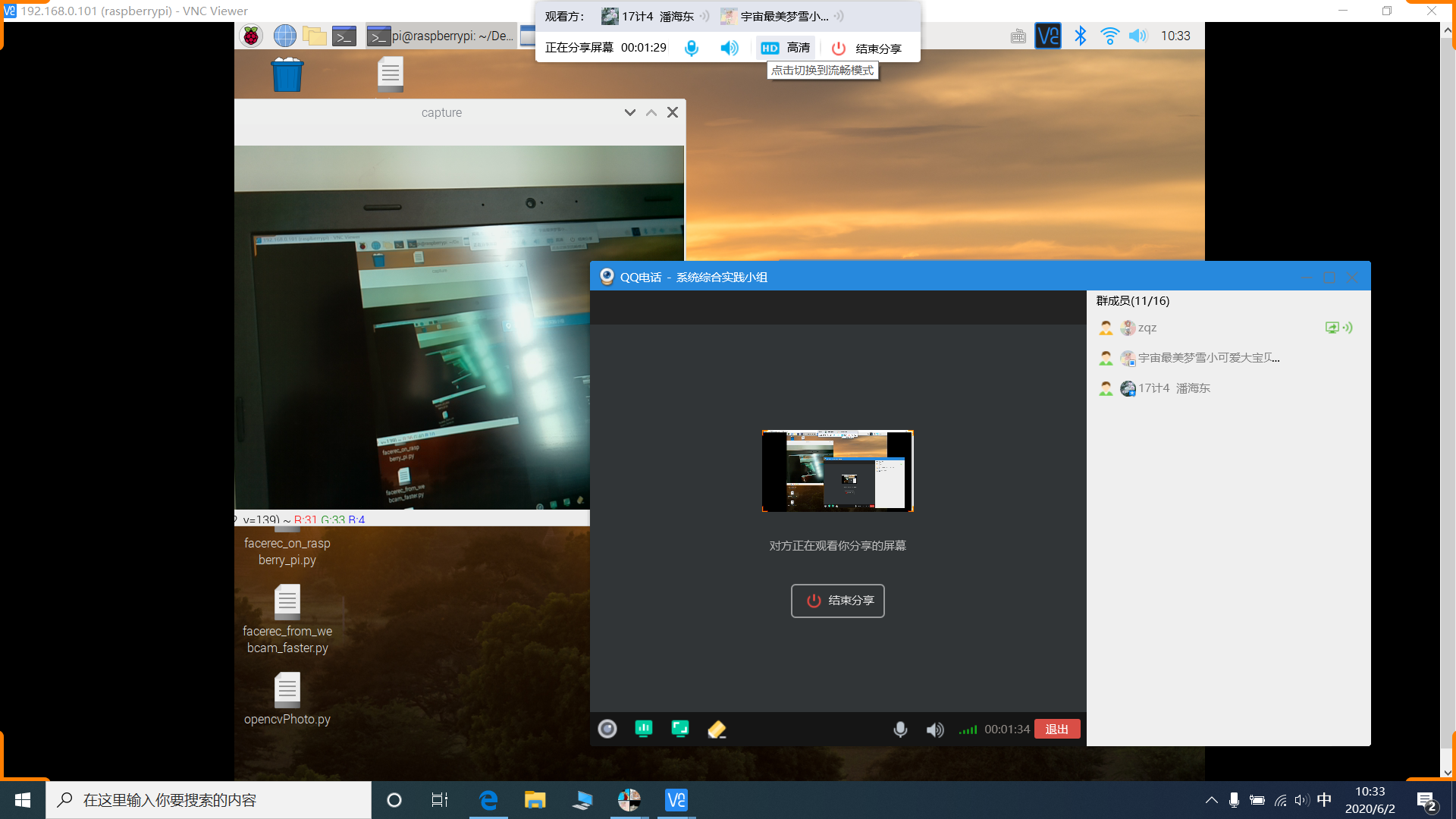
讨论大作业选题

总的来说,这次实验难度不大,opencv我在上一次实验中就已经配过了,基本没有遇到难题。